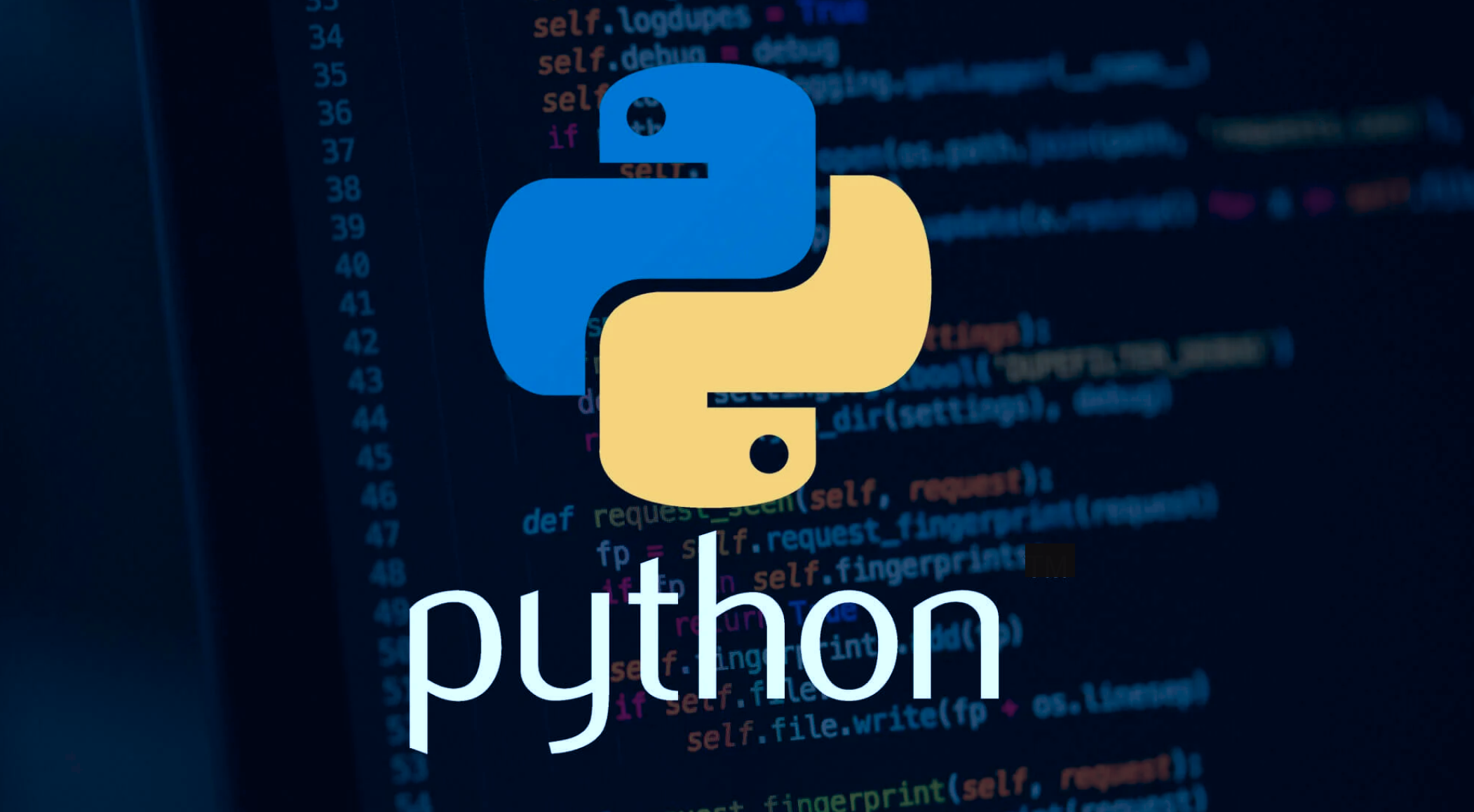Introduction
Known for its versatility and ease of use, Python has become a popular programming language among developers worldwide. According to Statista, Python is 3rd most used programming language among developers worldwide as of 2023.

This popularity makes Python a key skill for developers and a critical area for hiring managers to focus on during technical interviews.
Effective Python coding interviews are essential for hiring managers. They need to ask the right Python interview questions to gauge a candidate’s true ability. That’s where InterviewZen comes in. It’s a platform that helps create technical interviews tailored for software engineers.
In this article, we will explore the top 8 Python interview questions that every hiring manager should ask. We will also discuss how Interview Zen can help craft these questions, ensuring you find the right person for your Python development needs.
What is Python?
Python is a versatile and widely used programming language known for its simplicity, readability, and extensive libraries. It was created by Guido van Rossum and first released in 1991. Python has gained huge popularity and is widely used across various industries and applications.
It was initially designed for general-purpose programming, and it has found extensive use in web development and other domains. Python’s key strength lies in its readability and ease of use. While Python is used for many applications, it is primarily known for its use in web development, data analysis, and scientific computing.
Popular Websites that Use Python:
- YouTube
- Dropbox
- Spotify
These websites handle massive amounts of data and user interactions daily, showcasing Python’s scalability and reliability for web applications.
Python is a versatile and widely adopted programming language with a strong presence in web development and various other fields. Its simplicity, integration capabilities, and compatibility with different platforms make it a popular choice for developers and organizations worldwide.
8 Python Interview Questions Every Hiring Manager Should Ask
1. Reverse Words in a Sentence
| Task: | Write a Python function called reverse_words, which receives a sentence as input and outputs that sentence with the words in reverse order. |
| Input Format: | A single string represents the sentence. |
| Constraints: |
|
| Output Format: | A string with the sentence’s words in reversed order. |
| Sample Input: | Python is awesome |
| Output: | awesome is Python |
Suggested Answer:
| def reverse_words(sentence):
words = sentence.split() reversed_sentence = ‘ ‘.join(reversed(words)) return reversed_sentence |
Code Explanation:
The reverse_words function operates in a few simple steps:
- It starts by splitting the sentence into words using the split() method. This creates a list of words.
- Then, the function reverses the order of these words using the reversed() function.
- The reversed words are joined back into a sentence using the join() method with a space character (‘ ‘) as the separator.
- Finally, the function returns this reversed sentence.
| Common Mistakes to Watch Out For: |
|
| Follow-ups: |
|
| What the question tests? | This interview question tests a candidate’s ability to manipulate strings and demonstrates their understanding of fundamental programming concepts like loops and conditionals. |
2. Maximum Subarray Sum
| Task: | Create a Python function named max_subarray_sum. This function should take an array of integers as input and return the maximum sum achievable by any contiguous subarray within that array. |
| Input Format: | The function will receive a list of integers. |
| Constraints: |
|
| Output Format: | The function should return a single integer, which is the maximum sum of a contiguous subarray found in the input array. |
| Sample Input: | [1, 2, 3, -2, 5] |
| Output: | 9 |
Suggested Answer:
| def max_subarray_sum(arr):
max_sum = arr[0] current_sum = arr[0] for i in range(1, len(arr)): current_sum = max(arr[i], current_sum + arr[i]) max_sum = max(max_sum, current_sum) return max_sum |
Code Explanation:
The max_subarray_sum function applies Kadane’s algorithm to determine the maximum sum of a subarray within a given array:
- It begins by setting both max_sum and current_sum to the first element of the array.
- As the function iterates through the array, it updates current_sum. This is either by adding the current element to it or starting a new subarray sum with the current element.
- max_sum is then updated at each step to reflect the maximum sum found so far.
- The function ultimately returns max_sum, which is the highest sum of any contiguous subarray in the array.
| Common Mistakes to Watch Out For: |
|
| Follow-ups: |
|
| What the question tests? | This question tests a candidate’s ability to apply Kadane’s algorithm correctly, showcasing their skills in implementing efficient algorithms. It also evaluates their understanding of array manipulation, including how to handle and perform operations on array elements. |
3. Merge Intervals
| Task: | Write a Python function named merge_intervals. This function should accept a list of intervals as input and return a new list where overlapping intervals are combined into single intervals. |
| Input Format: | The input will be a list of intervals. Each interval is represented by a list with two integers: the start and end points of the interval. |
| Constraints: |
|
| Output Format: | The output should be a list of merged intervals. Each merged interval is represented as a list with two elements: the start and end points of the interval. |
| Sample Input: | [[1, 3], [2, 6], [8, 10], [15, 18]] |
| Output: | [[1, 6], [8, 10], [15, 18]] |
Suggested Answer:
| def merge_intervals(intervals):
intervals.sort(key=lambda x: x[0]) merged = [] for interval in intervals: if not merged or merged[-1][1] < interval[0]: merged.append(interval) else: merged[-1][1] = max(merged[-1][1], interval[1]) return merged |
Code Explanation
The merge_intervals function begins by sorting the intervals based on their start points. This step is crucial for efficiently identifying overlapping intervals.
- An empty list named merged is initialized. This list will eventually contain the merged intervals.
- The function then iterates through each interval in the sorted list.
- For each interval, the function checks if it overlaps with the last interval in the merged list. There are two scenarios:
- If merged is empty or if the current interval does not overlap with the last interval in merged, the current interval is simply appended to the merged list.
- If there is an overlap, the function updates the endpoint of the last interval in merged to be the maximum of the two interval’s endpoints.
- After processing all intervals, the function returns the merged list. This list now contains intervals that have been merged wherever there was an overlap, ensuring no overlaps remain.
| Common Mistakes to Watch Out For: |
|
| Follow-ups: |
|
| What the question tests? | This question assesses the developer’s ability to tackle complex problems by merging overlapping intervals in a list. It’s a great way to gauge a candidate’s proficiency in identifying patterns, breaking down problems, and designing effective solutions using programming constructs like loops, conditionals, and list manipulation. |
4. Balanced Parentheses Checker
| Task: | Write a Python function named is_balanced that checks if a string of parentheses, brackets, and curly braces is balanced. A string is balanced if each opening symbol has a corresponding closing symbol and the pairs are properly nested. |
| Input Format: | A single string consisting of parentheses (), brackets [], and curly braces {}. |
| Constraints: |
|
| Output Format: | Return True if the string is balanced and False otherwise. |
| Sample Input: | “{[()()]}” |
| Output: | True |
Suggested Answer:
| def is_balanced(s):
stack = [] mapping = {‘)’: ‘(‘, ‘}’: ‘{‘, ‘]’: ‘[‘} for char in s: if char in mapping: top_element = stack.pop() if stack else ‘#’ if mapping[char] != top_element: return False else: stack.append(char) return not stack |
Code Explanation:
- The function uses a stack to keep track of opening symbols.
- It iterates through each character in the string.
- If it encounters a closing symbol, it checks if the last symbol in the stack matches the corresponding opening symbol. If not, the string is unbalanced.
- If the stack is empty at the end of the iteration, the string is balanced.
| Common Mistakes to Watch Out For: |
|
| Follow-ups: |
|
| What the question tests? | This question assesses the candidate’s understanding of stack data structures and ability to apply them to solve a common programming problem. It also tests their knowledge of string manipulation and attention to detail, particularly in handling edge cases. |
5. Find All Anagrams in a String
| Task: | Write a function called find_anagrams that takes two strings, s and p, and returns the start indices of all anagrams of p in s. An anagram of a word is a permutation of its letters. |
| Input Format: | Two strings: s (the main string) and p (the string of which anagrams are to be found). |
| Constraints: |
|
| Output Format: | A list of integers representing the start indices of the anagrams of p found in s. |
| Sample Input: | s = “cbaebabacd”, p = “abc” |
| Output: | [0, 6] |
Suggested Answer:
| def find_anagrams(s, p):
from collections import Counter p_count = Counter(p) s_count = Counter(s[:len(p) – 1]) result = [] for i in range(len(p) – 1, len(s)): s_count[s[i]] += 1 # include a new char in the window if s_count == p_count: # compare counters result.append(i – len(p) + 1) # append the starting index s_count[s[i – len(p) + 1]] -= 1 # remove the oldest char in the window if s_count[s[i – len(p) + 1]] == 0: del s_count[s[i – len(p) + 1]] # clean up the counter return result |
Code Explanation:
- The function uses collections.Counter to count characters in p and in a sliding window of s.
- It iterates through s, updating the character count for the current window.
- If the character counts of the window and p match, the starting index of that window is added to the result list.
- The function maintains the size of the sliding window by adding a new character and removing the oldest one in each iteration.
| Common Mistakes to Watch Out For: |
|
| Follow-ups: |
|
| What the question tests? | This question examines the candidate’s ability to use advanced data structures (like Counters) and algorithms (sliding window technique). It also tests their skills in string manipulation and attention to detail, especially in maintaining the correct window size and character counts. |
6. Serialize and Deserialize a Binary Tree
| Task: | Create two Python functions, serialize and deserialize. serialize converts a binary tree into a string representation, and deserialize converts that string back into the original binary tree structure. |
| Input Format for Serialize: | The root node of a binary tree. |
| Input Format for Deserialize: | A string representing the serialized binary tree. |
| Constraints: |
|
| Output Format for Serialize: | A string representing the serialized form of the binary tree. |
| Output Format for Deserialize: | The root node of the binary tree that has been reconstructed from the serialized string. |
| Sample Input: | 1
/ \ 2 3 / \ 4 5 |
Suggested Answer:
| class TreeNode:
def __init__(self, val=0, left=None, right=None): self.val = val self.left = left self.right = right def serialize(root): “””Encodes a tree to a single string.””” def helper(node): if not node: vals.append(“null”) return vals.append(str(node.val)) helper(node.left) helper(node.right) vals = [] helper(root) return ‘,’.join(vals) def deserialize(data): “””Decodes your encoded data to tree.””” def helper(): val = next(vals) if val == “null”: return None node = TreeNode(int(val)) node.left = helper() node.right = helper() return node vals = iter(data.split(‘,’)) return helper() |
Code Explanation for serialize:
- The serialize function converts a binary tree into a string representation using preorder traversal (root-left-right).
- It begins at the root and processes each node before its children. For each node, it adds the node’s value to the string.
- When encountering a null (or empty) node, which signifies the absence of a child in the tree, it adds the placeholder “null” to the string. This is crucial for preserving the tree structure in the string.
- The resulting string is a comma-separated list of node values and “null” placeholders, reflecting the tree’s structure.
Code Explanation for deserialize:
- The deserialize function reconstructs the binary tree from its string representation.
- It uses an iterator to step through each element of the string (split by commas). The iterator ensures that each node is processed in the same preorder sequence.
- For each non-“null” element, the function creates a new tree node and recursively constructs its left and right children in the preorder sequence.
- The function handles “null” elements by returning None, effectively reconstructing the tree’s original structure, including its empty branches.
| Common Mistakes to Watch Out For: |
|
| Follow-ups: |
|
| What the question tests? | This question tests the candidate’s understanding of binary trees, tree traversal algorithms, and their ability to design algorithms for complex data structures serialization and deserialization. |
7. Check if String is a Palindrome
| Task: | Write a Python function called is_palindrome that checks if a given string is a palindrome. A palindrome is a word, phrase, number, or other sequences of characters that reads the same forward and backward (ignoring spaces, punctuation, and capitalization). |
| Input Format: | A single string. |
| Constraints: |
|
| Output Format: | A boolean value: True if the string is a palindrome, and False otherwise. |
| Sample Input: | “A man, a plan, a canal: Panama” |
| Output: | true |
Suggested Answer:
| def is_palindrome(s):
filtered_chars = [c.lower() for c in s if c.isalnum()] return filtered_chars == filtered_chars[::-1] |
Code Explanation:
- The function first filters out non-alphanumeric characters and converts all characters to lowercase.
- It then checks if the list of filtered characters reads the same forwards and backwards.
| Common Mistakes to Watch Out For: |
|
| Follow-ups: |
|
| What the question tests? | This interview question tests the candidate’s ability to manipulate strings, specifically their proficiency in handling character filtering, string reversal, and case insensitivity. It also assesses their understanding of basic programming constructs like loops and conditions. |
8. Find the First Non-Repeating Character in a String
| Task: | Write a Python function named first_non_repeating_char that finds the first non-repeating character in a given string and returns its index. If there is no such character, return -1. |
| Input Format: | A single string. |
| Constraints: |
|
| Output Format: | An integer representing the index of the first non-repeating character. If there is no non-repeating character, return -1. |
| Sample Input: | “loveleetcode” |
| Output: | 2 (The first non-repeating character is ‘v’, which is at index 2.) |
Code Explanation:
- The function first iterates over the string, creating a dictionary (frequency) to store the count and index of each character.
- It then iterates over the frequency dictionary to find the first character with a count of 1.
- The index of this character is returned, or -1 if no non-repeating character is found.
| Common Mistakes to Watch Out For: |
|
| Follow-ups: |
|
| What the question tests? | This interview question tests a candidate’s ability to manipulate strings and use data structures like dictionaries. It also demonstrates their understanding of iteration and conditionals in Python. |
Use Interview Zen for Free to Create Your Technical Hiring Interviews
Do you need help finding the right software developers for your team? Interview Zen offers a powerful solution. With a proven track record of over 500,000 interviews conducted, our platform revolutionizes how you assess candidates. This enables you to make more accurate hiring decisions compared to traditional methods. The demand for top-notch developers is surging, and Interview Zen is the reliable partner you need to meet this challenge head-on.

The platform is currently free to use, making it a cost-effective choice for businesses of all sizes. Though a pricing model may be introduced, the focus remains on providing a valuable service to as many users as possible.
By implementing Interview Zen in your hiring process, you can reap multiple benefits that will help you find the ideal candidate more efficiently and effectively.
Key Features Of Interview Zen
1. Custom Programming Questions
Interview Zen supports various programming languages, allowing you to tailor your technical assessments accurately. Whether you’re hiring for Python, C/C++, C#, Java, JavaScript, PHP, R, or other languages, you can create unlimited custom questions in various languages. This ensures that your assessments are uniquely suited to meet your hiring requirements.
To experience these features firsthand, you can try the demo available on the Interview Zen website.
2. Speedy Review

Interview Zen allows hiring managers to review recorded interviews at varying speeds, like 1x, 2x, or even 5x. This functionality provides valuable insights into how the candidate processed the question, how quickly they worked, and how much they modified their code throughout the assessment. This feature lets you better understand the candidate’s technical skills and problem-solving abilities.
3. Easy Invitations

Each interview you generate has a unique URL displayed on your dashboard. You can invite candidates by sending them the interview link or adding it to a job posting. This makes the process of taking the interview incredibly straightforward for candidates.
4. User-Friendly Interface
Interview Zen focuses on offering essential features that are not only effective but also easy to navigate. With just three clicks, you can create an interview, send out invites, and begin evaluating candidates. This user-friendly approach sets it apart as a preferred choice for online assessments.
If you want to know how to structure your technical interviews effectively, check out our guide on How to Structure Technical Interviews for Software Developers.
Conclusion
The questions discussed in this guide assess a candidate’s technical skills, problem-solving abilities, and understanding of Python’s nuances. From string manipulation to data structures and algorithms, each question is designed to assess a candidate’s proficiency in Python comprehensively.
Remember, the goal of a technical interview is not just to test a candidate’s current knowledge but also to gauge their ability to learn, adapt, and apply their skills to real-world problems. Using these carefully crafted questions, hiring managers can gain deep insights into the capabilities and potential of their candidates.
We encourage you to leverage Interview Zen for your Python interviewing needs. This online coding platform simplifies the process of creating and managing technical interviews, making it easier to evaluate candidates effectively.
With its focus on code-related questions and practical assessments, Interview Zen is an invaluable tool for any technical recruiter or hiring manager looking to streamline their interview process and find the perfect fit for their Python development roles.
So, take these questions, adapt them to your specific needs, and use Interview Zen to bring efficiency and precision to your hiring process. Happy interviewing!
Don’t miss the opportunity to elevate your hiring practice to the next level. Try Interview Zen for your next round of technical interviews.
Read more articles:




